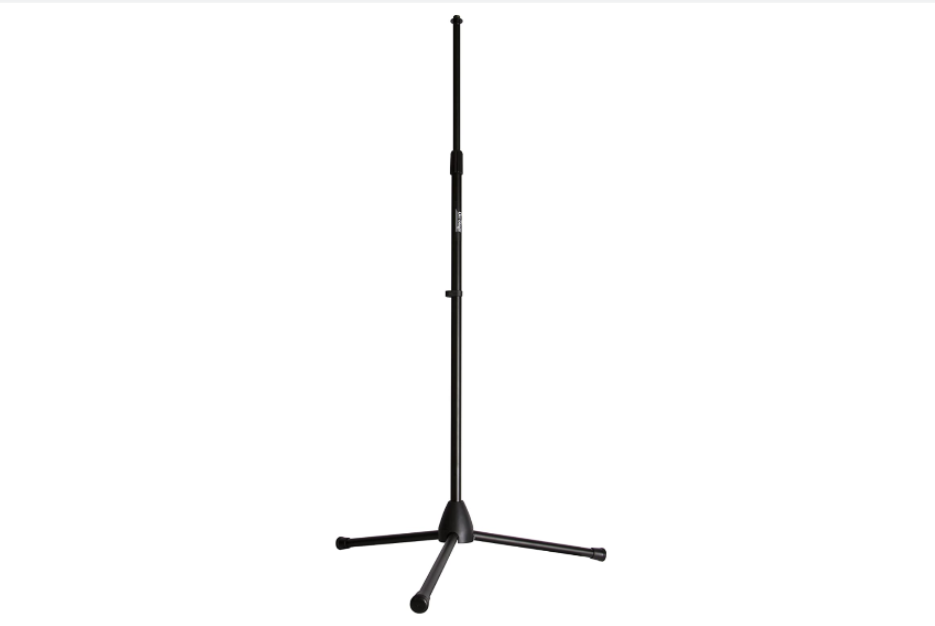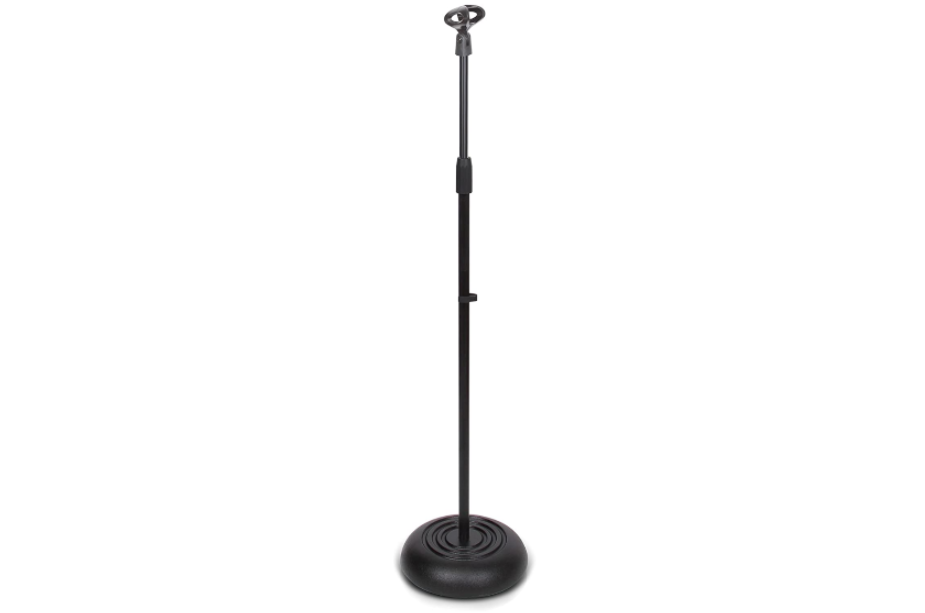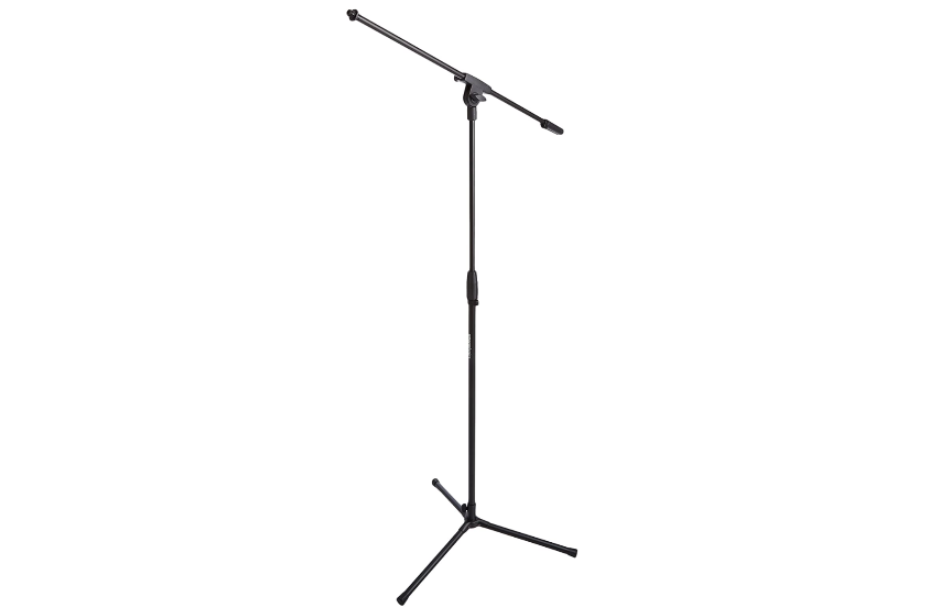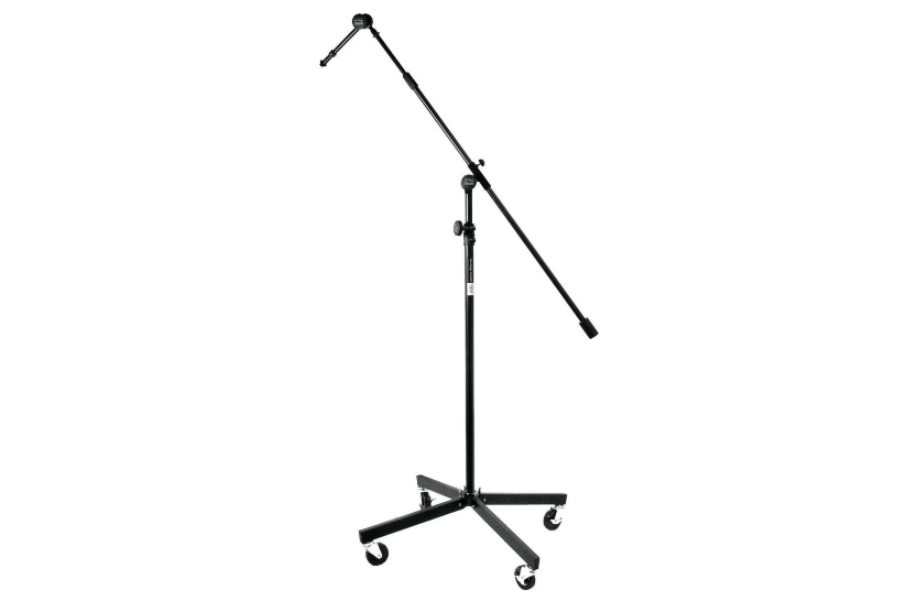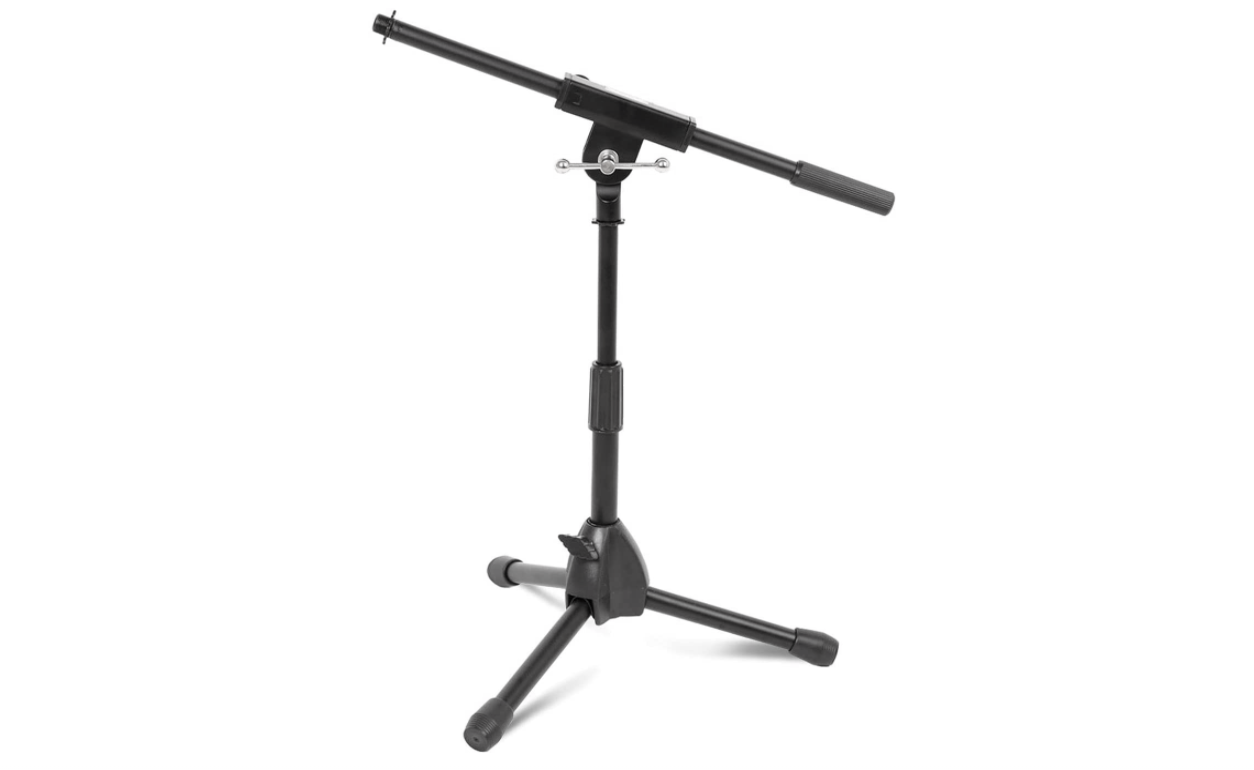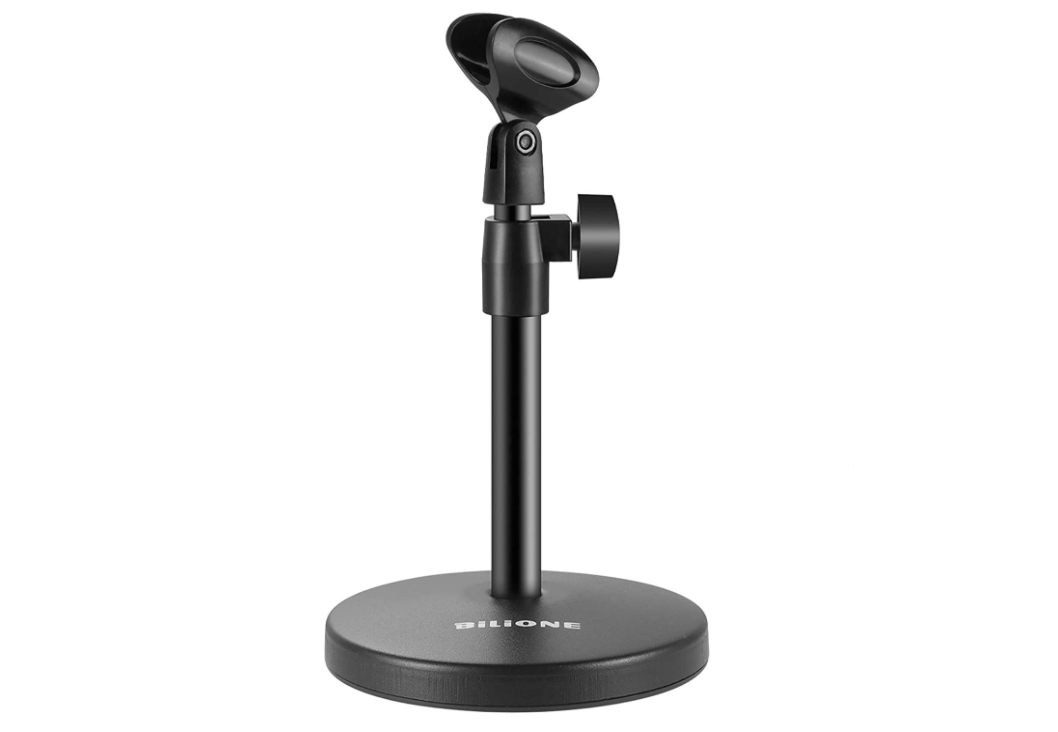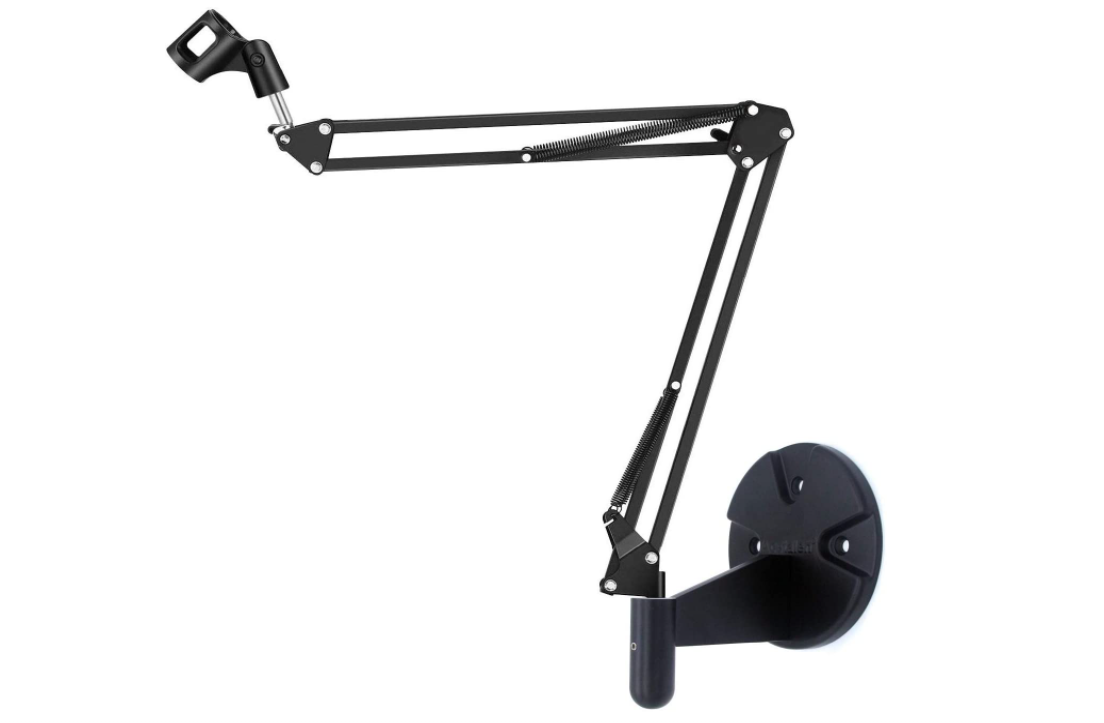Microphone stands are some of the most underappreciated pieces of equipment in the audio world. Most people think they're all pretty much the same, but professionals will tell you differently.
If you use the wrong stand or a low-quality one, you can kiss your expensive microphone goodbye because it might tip over.
This article offers a basic guide to mic stands, revealing the seven different types as well as which setups they're best suited for.
What Is a Microphone Stand?
Microphone stands have existed for over 100 years. Nobody actually "invented" them since some of the first microphones had undetachable stands built into the mics themselves. The concept of a stand came along with the invention of the microphone.
Today, the majority of mic stands are free-standing. Their purpose is to act as a mount for your microphone so that you don't have to hold it in your hand. You've probably never seen someone in a recording studio hold their mic by hand, this is because it can result in unwanted vibrations that ruin the take.
Mic stands are very useful in recordings where someone isn't able to use their hands, such as a singer who's playing an instrument at the same time. They're also ideal for when multiple sound sources are being recorded, such as a choir or orchestra.
As with any piece of equipment, there's a range of microphone stands and some are better suited for different types of setups. Let's have a look at the seven types of microphone stands.
Tripod Stands
The tripod mic stand is one of the most common ones, hence it falls under the category of "standard stands". You'll often see this mic stand in recording studios, live stages, events, and TV programs.
The design is very straightforward. It has one straight pole with a mount at the top, and you can adjust the height. At the bottom are three feet that easily fold in and out for packing and setting up. They're also relatively affordable.
The downside to tripod stands; you can trip over the feet if you're not careful. This can cause it to tip over, and there goes the microphone. Look for rubber feet with grooves, such as the On-Stage MS7700B tripod shown above, because it will reduce movement.
Round Base Stands
This is another standard stand that is commonly used and affordable. The pole of a round base stand is identical to that of a tripod stand, and instead of feet, it has a cylindrical or dome-shaped base. The one shown here is the Pyle PMKS5 dome-shaped round base stand.
Artists tend to prefer round base stands over tripod stands, especially during live shows, since you're not as likely to trip over them. If the base is too wide, however, getting close to the mic can get uncomfortable and you'll need to assume a hunched-over position.
The steadiness of a round base stand will depend on the material and weight of the base. A metal base is preferable, but it'll be heavy to carry.
Tripod Boom Stands
A tripod boom stand has the same bottom half as a standard tripod stand, but there's an added pole attached at the top of the vertical pole, known as the boom arm.
The boom arm is what makes a tripod boom stand flexible and often more comfortable to use since you have more freedom to angle the mic. Plus, there's little risk of tripping over its feet due to the extended reach as shown with the Amazon Basics Adjustable Boom Stand above. Singers also use this stand while sitting down.
Overhead Stands
Overhead stands have a sturdier and more complex build than any of the others discussed here. Which makes them the most expensive type of mic stand.
The base either consists of a solid, triangular piece of steel or several steel legs as shown with the On-Stage SB96 Boom Overhead Stand above—and they always have lockable wheels. This allows you to push the stand without having to lift its heavy weight.
Similar to the tripod boom stand, it has a boom arm, but it reaches out much further. This is why you'll often hear people mention "overheads" when talking about recording drums. This is the stand that's used to capture the collective sound of a drum kit because it extends far and high.
The mount is more adjustable than any other stand's mount. Pair this with the reach of the boom arm, and you can achieve some extreme angles with the microphone. An overhead mount is also ideal for heavier microphones, such as condensers.
Low-Profile Stands
Low-profile stands, or short mic stands, are like the smaller versions of tripod boom stands. They function the same as tripod boom stands, but everything about the low-profile stand is shorter, as shown with the Stage Rocker SR610121B Low-Profile Stand above.
These stands are typically used to record sound sources that are low on the ground, such as kick drums. Hence the name "low-profile".
Desktop Stands
If you watch podcasts or live streams, you've probably seen this type of mic stand. A desktop stand is like a mini standard mic stand.
The base will either be round like a round base stand like the Bilione 3-in-1 Desktop Stand above or have three legs like a tripod stand. A lot of them can also be fixed onto a surface with screws.
There is usually one, short, adjustable pole in the middle with a mount at the top. But some desktop stands also have a little boom arm.
Specialty Stands
Specialty stands is an umbrella term for any type of mic stand that doesn't fall into one of the abovementioned main categories.
Wall and ceiling mic stands are good examples. The base gets mounted onto a wall or ceiling with screws, and there are usually two connected poles, namely the vertical and horizontal arms, which makes it very flexible. These are often used for broadcasts or voice-overs.
Other specialty stands include those with clip-on bases. Instead of placing it on the ground or mounting it to a surface, you can clip it onto something such as the edge of a desk. These are great for traveling since they're lightweight and quick to set up.
Mic stands that are designed for particular sound sources also fall into this category. For example, dual-mic stand holders for recording two sound sources at once, and neck brace mic holders which fit around your neck.
The Microphone Stand Matters
As you can see, microphone stands are diverse and you'll get different uses out of the seven different types. Don't make the mistake of underestimating the importance of a mic stand in your next recording.


